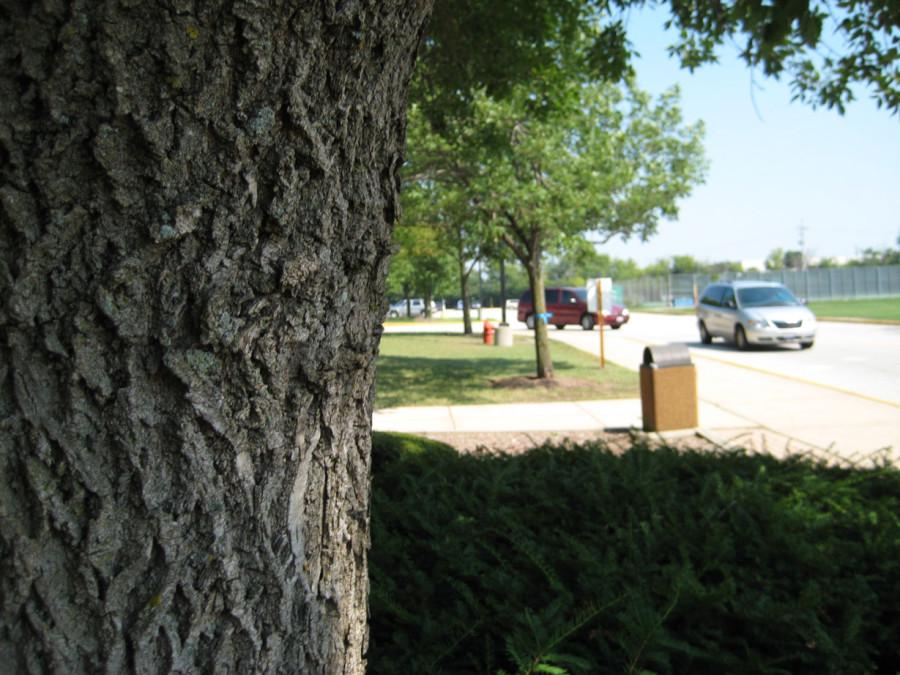Mariaelana Brenner, senior, came home one day after school and was surprised to find the ash tree in her front yard had disappeared.
“I came home one day and it was gone,” Brenner said. “The village came to get all the trees that came down after the storm; they found it was infected with the [ash borers], and they asked my dad if they could take it down.”
While the buzzing mosquitoes may have seemed to be the worst summer insect pests, another bug has been causing significantly more trouble this year. The emerald ash borer has spread to Lake County, destroying its abundant ash trees, and different groups have different plans to combat the beetles.
The emerald ash borer is a beetle native to Asia, and was first discovered in Michigan in 2002. Since then it has killed tens of millions of ash trees, and has spread throughout the Midwest and Canada, according to http://emeraldashborer.info.
Lake County is now feeling the effects of the ash borer’s spread in many ash trees among its parkways and forest preserves.
“At almost every forest preserve site we own, we see signs of the emerald ash borer,” Jim Anderson, Natural Resources Manager, said.
The ash borers forced the Forest Preserve to remove about 100 trees and shrubs at its Thunderhawk Golf Club in Beach Park, among other facilities. In an effort to find the ash borers, the forest preserve has been using “trap trees.”
“It’s a tree they set up to check for the larvae,” Allison Frederick, Environmental Communications Specialist, said. “They cut a section of bark out, which makes the tree attractive to emerald ash borers.”
The ash borer lays its eggs under the bark of an ash tree, and the larvae feed on the tree until October after they hatch in August.
In a bigger move, Forest Preserve officials are releasing predator wasps into select preserves, with the hope the wasps will control the ash borer population. The wasps are very small, have no sting, and are the natural predators of the beetles.
“[University of Michigan researchers] have come up with three different species of wasp,” Anderson said. “Two lay their eggs inside the ash borer larvae; one lays its eggs on top of the larvae.”
The wasps have already been released in Cook County as well as areas of Michigan, where researchers were pleased to find they had survived a particularly harsh winter. The plan underwent rigorous testing to ensure the wasps would not have a negative impact on the ecosystem.
“Once the emerald ash borers are under control, [the wasp] population will go down also,” Anderson said.
The Lake Zurich Village government, meanwhile, approved a plan back in May to combat the ash borer by removing all the ash trees in the parkways and parks of Lake Zurich. The total number of ash trees is 3,050, or 38 percent of Lake Zurich’s tree population, according to the Village website.
As part of the approved program, the Village will remove 300 ash trees per year for 10 years at a cost of $100,000 per year. The removed trees will be replaced with other tree species such as oak and maple. The board considered using chemical injections to kill the ash borers, but that would have been more expensive, according to the Lake Zurich Patch.
LZHS has a number of mature ash trees on its property, according to Phil Stanko, science teacher. Should it be necessary, Stanko recommends replacing infected ash trees with a variety of tree species.
“Maybe use sycamore in some place, hackberry in some places, and isolated specimin trees for identification in classes,” Stanko said. “We have to develop new practices and strategies [for planting trees], and I think one of the things we need to look at is developing an ecosystem rather than a landscape.”
Signs of emerald ash borers
If you have ash trees near your house watch for these symptoms:
- Dead or dying branches on the top third of the tree, or “crown dieback.” The ash borers destroy the tissues under the bark that bring water and nutrients to these top areas
- New branches growing from low on the trunk, called “suckers.”
- Frequent visits from woodpeckers trying to eat the ash borer larvae inside.
- Tiny, eighth of an inch holes shaped like the letter D. The adult ash borers leave the holes when they exit the tree. These could be anywhere on the tree.
- Winding tunnels underneath the bark.
If you believe an ash tree on your property has been infested with emerald ash borers, call the Lake Zurich Public Works Department’s Forestry Unit at (847) 540-1696.

